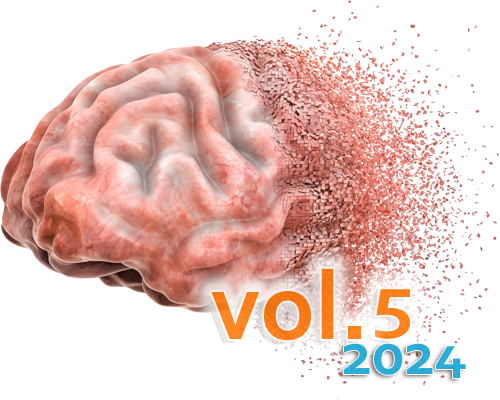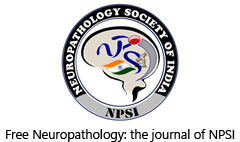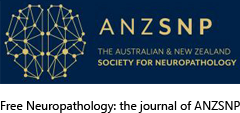Cell-in-cell phenomena of intracellular neutrophils in a recurrent pleomorphic xanthoastrocytoma
DOI:
https://doi.org/10.17879/freeneuropathology-2024-5341Keywords:
Glioma, Brain tumor, Pleomorphic xanthoastrocytoma, Phagocytosis, Case report, Emperipolesis, Cell-in-cellAbstract
We describe a case of a young patient with a recurrent pleomorphic xanthoastrocytoma (PXA) showing unusual cell-in-cell (CiC) phenomena. We observed mostly viable but also necrotic neutrophils engulfed within tumor cells. The recurrent tumor was immunopositive for BRAFV600E mutant protein and showed CDKN2 homozygous deletions typical of PXA. Both genetic alterations were also reported in the original primary tumor. Unlike the original tumor that was GFAP and Olig-2 immunopositive, the recurrent neoplasm was largely negative for GFAP and Olig-2 suggesting dedifferentiation. The large malignant cells that contained the neutrophils were negative for histiocytic and lymphohematopoietic markers. Whereas CDKN2 homozygous deletion is common in PXA, its presence is rare in histiocytic neoplasms. Both reactive astrocytes and glial neoplasms very rarely may engulf neutrophils in a process resembling emperipolesis or cellular cannibalism. Future work may clarify which type of CiC pathway is involved.
Metrics
Published
How to Cite
Issue
Section
License
Copyright (c) 2024 Gianna M. Fote, Kamran Urgun, Jordan Davies, Alexander S. Himstead, Kevin Gramajo-Aponte, Alexander Lopez; Frank P.K. Hsu; William H. Yong

This work is licensed under a Creative Commons Attribution 4.0 International License.
Papers are published open access under the Creative Commons BY 4.0 license. This license lets others distribute, remix, adapt, and build upon your work, even commercially, as long as they credit you for the original creation. Data included in the article are made available under the CC0 1.0 Public Domain Dedication waiver, unless otherwise stated, meaning that all copyrights are waived.


















